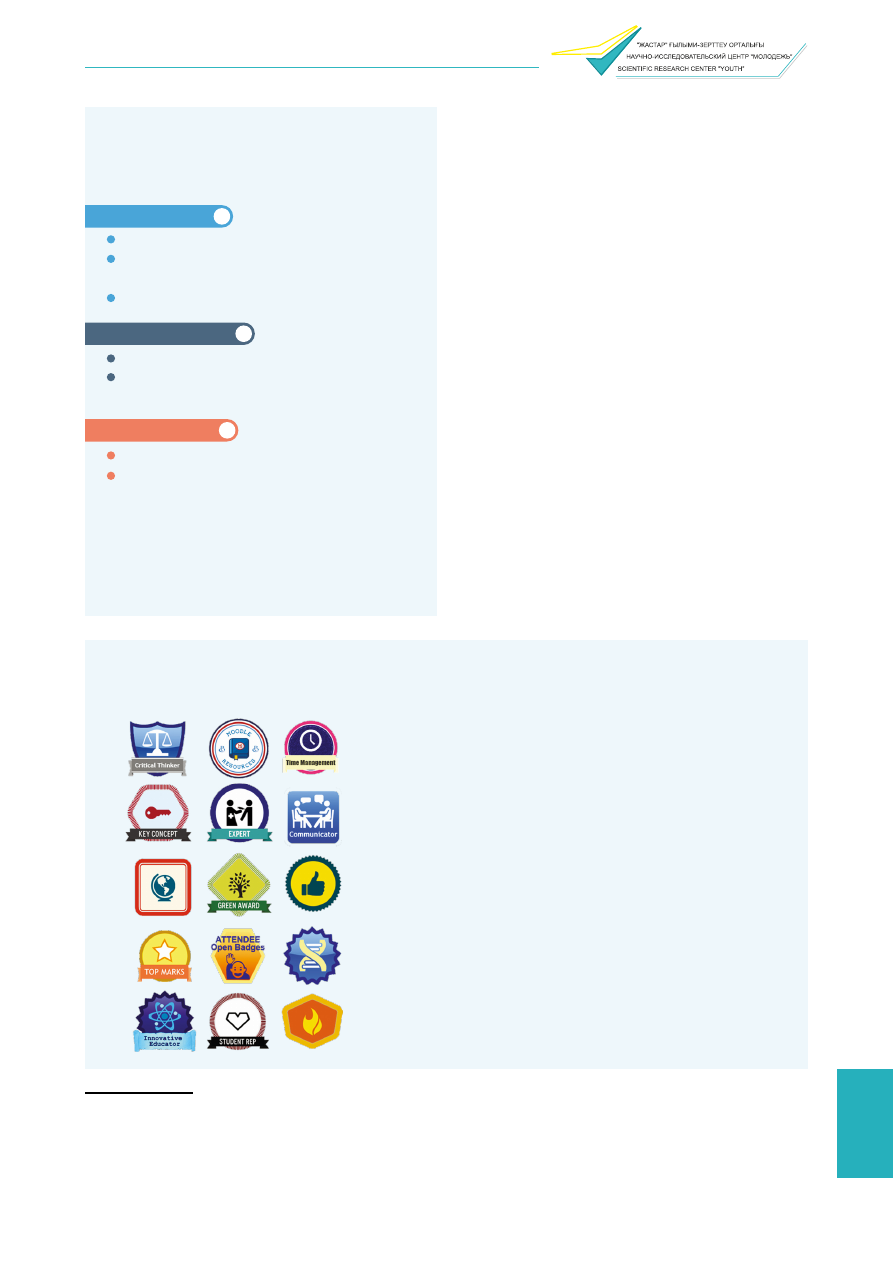содержание .. 20 21 22 23 ..
Национальный доклад «Молодежь Казахстана – 2018» - часть 22

EDUCA
TIO
N
AND
SCIE
NCE
IN
TH
E LIFE
O
F
TH
E Y
OUTH
339
CH
APTE
R 4
50
National Report on the State and Development of the Education System of the Republic of Kazakhstan (following the results of 2017):
E. Nurlanov, M. Amankazy, G. Nogaibaeva, A. Akhmetzhanova, G. Karbaeva, M. Dauliev, E. Korotkikh, D. Abdrasheva, M Shakenova, A.
Duisengali, N. Kasymbekova. - Astana: IAC, 2018.- 434 p., P. 305
51
J. Knight (2012) Internationalization: Three Generations of Crossborder Higher Education http://www.iicdelhi.nic.in/
ContentAttachments/Publications/DiaryFiles/53511July92012_IIC%20Occasional%20Publication%2038.pdf
value was − 709,519 people
50
. According to J. Knight,
the system of higher and postgraduate education in
Kazakhstan is in a transitional stage from the first to the
second stage of the development of internationalization
(fig. 4.8)
51
. To ensure the transition to the third stage
− positioning as an educational hub in Central Asia,
designated among the objectives of the Strategic
Development Plan of Kazakhstan until 2025 − it seems
necessary to form a unified national strategy for the
development of internationalization.
The objectives of the development of the Kazakhstan
education system are connected with the digitization of
the educational sector, ensuring the inclusive nature of
the educational system, and recognizing the importance
of non-formal education.
The digitization of the educational services sector
began in Kazakhstan in 1997 with the processes
of automating education. The task of digitalization
has acquired particular relevance in connection with
the implementation of the State Program “Digital
Kazakhstan” since 2017. Today, Kazakhstan is heading
for the development of network literacy, increasing the
level of equipment of educational organizations with
broadband Internet, interactive equipment, robotics
classrooms, educational content is being automated,
national IT personnel are being trained, and a digital
education management system is being developed.
Figure 4.8
STAGES OF THE INTERNATIONALIZATION OF HIGHER
EDUCATION BY J. KNIGHT STAGES MAIN FOCUS
Source: J. Knight (2012) Internationalization:
Three Generations of Crossborder Higher Education
The first stage
1
The second stage
2
The Third stage
3
Academic mobility of students and teaching staff
Student mobility to foreign universities
for education
Mobility teaching staff for teaching and research
Software mobility and providers
Mobility of educational programs
and their providers
Educational hubs
Attracting foreign students, researchers,
educational programs, training providers, research
companies for learning, knowledge production
and innovation development
Figure 4.9
THE “OPEN BADGES” SYSTEM
Electronic badges Open Badges −
digital mini-certificates to
confirm skills and abilities. These icons can be placed in your
resume, on a personal website, on special platforms
https://openbadges.org or in a social network profile. Open
Badges is a modern mechanism for recognizing the results of
non-formal education. Their appearance is associated with video
games. The original implementation of the evaluation system in
the game is attributed to Microsoft, which introduced the Xbox
360 Gamerscore system in 2005. Today, various platforms and
organizations offer the possibility of assigning badges for the
development of such skills as the critical thinking “Critical
Thinker”, the communicativeness “Communicator” and many
others. At the same time, the standardization sector for the
recognition of non-formal education is developing.